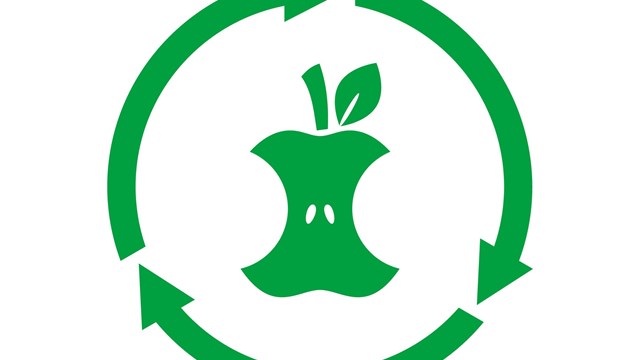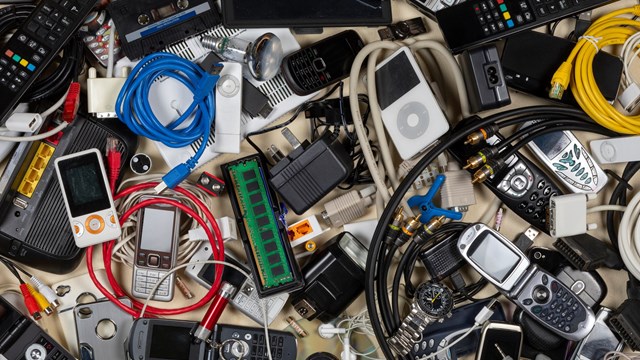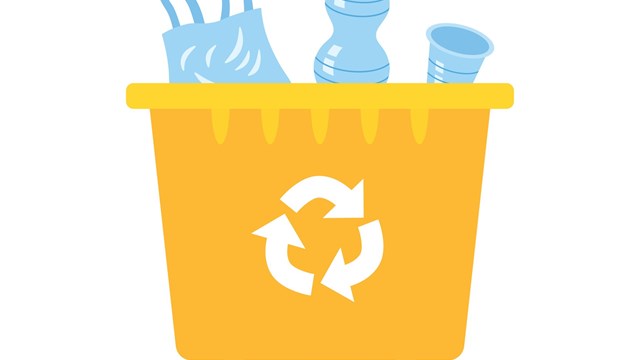
It’s your twice-a-year, floor-to-rafters marathon house-cleaning session. You’ve recycled all your newspapers, taken your soda bottles back to the market and disposed of that fern that’s been gone for a few weeks now. Cleaning is nearly done, except for that small pile of “what do I do with those?” materials in the corner.
Those questionable items might include a can of paint, or maybe a fluorescent bulb from the bathroom or an air conditioner that stopped working when the temperature hit 95 degrees. No matter what the items are, we’ve all been faced with the problem of disposing of potentially hazardous trash — we know we’re not supposed to just throw things like this away, but what exactly are we supposed to do with them?
Luckily, the New York City Department of Sanitation (DSNY), the Department of Environmental Protection (DEP) and your own building managers have the answers for just about any refuse disposal questions.
Can’t I Just Throw it Away?
We’ve all thought about just sneaking that old cooking thermometer into the trash or pouring that paint down the drain, but in reality, even the smallest amount of chemical waste can cause serious environmental problems.
According to the U.S. Environmental Protection Agency (EPA), ordinary American households generate 1.6 million tons of hazardous waste per year. As little as one gallon of used motor oil, improperly disposed of, has the potential to contaminate up to one million gallons of drinking water. The mercury in a thermometer, thermostat or fluorescent bulb can find its way into our drinking water or the fish we eat, ultimately leading to dangerous levels of build-up in our systems. Things like fluorescent light bulbs pose a two-fold threat—because of the gases within the tubes, breaking them can have explosive results, sending shards of glass flying. Also, they contain small amounts of mercury, used to excite the gases within the bulbs. What it all comes down to is that even the smallest action could have a potentially serious consequence.
For co-op and condo owners, knowing the rules of your building and your city is vital. “We generally use the DSNY guidelines in our buildings,” says Jeff Heidings of Siren Management Corporation. “Ever year we send out the color forms that the Department uses, telling people how to dispose of certain household wastes.”
Once that information is disseminated, it is up to each resident to follow those guidelines. “Anything outside of normal refuse is not the responsibility of the building,” he says.
Knowing what’s permissible and what isn’t can prevent significant problems in the future, and getting rid of dangerous products and substances in the proper way isn’t always simple. New York City has a strict set of guidelines when it comes to disposing of refuse. “[We] do not collect hazardous waste,” says Kathy Dawkins, director of public information for the Department of Sanitation. “Residents with these items must call a private hauler, or a contractor licensed to remove and dispose of hazardous materials legally.”
What’s What?
Sometimes it’s difficult to even know exactly what constitutes a potentially hazardous material. The EPA lists items including paints, cleaners, stains and varnishes, motor oil and pesticides. The DSNY also includes items such as fluorescent bulbs, thermometers, transmission fluid and batteries. Refrigerators and air conditioners require special disposal. Home medical waste, such as syringes, also pose a safety issue.
Other materials, while not toxic, still pose certain safety hazards and as a result require special removal. For co-op and condo owners, those include all rubbish from renovation or construction projects.
Once potentially hazardous materials are identified, there are myriad ways in which to dispose of them safely and legally. As with so many other environmental issues, recycling is at the top of the list, especially when it comes to things like paint or art supplies.
“The department encourages people to donate,” Dawkins says, directing people to the department website at www.nyc.gov/sanitation under the recycling page. Whether it’s paint for theatre groups or perhaps pesticides for gardening groups, sharing is a great way to reduce waste. Sharing and donating also keeps potentially harmful materials out of landfills and water supplies while simultaneously helping community groups and schools cut costs and allow more people to take part. The DSNY site puts organizations in need of supplies in touch with individuals looking to dispose of these materials, making it easier for everyone involved.
If it’s just a small amount of paint taking up space in your closet, then it is permissible to dispose of it in your regular household trash. To prevent leaking, though, the DSNY recommends adding kitty litter to soak up and solidify the liquid, and then making sure that the container lid is closed tightly before depositing it in the garbage. This same method will work for small amounts of household cleaners and solvents such as bleach, ammonia, metal polishers, paint thinner, wood finishing products and household pesticides, Dawkins says.
Disposing of larger amounts of these products may require a few phone calls. “They must be disposed of by private hauler contractors,” Dawkins reiterates. “Residents can also bring those items to the department’s Household Special Waste Drop-off sites.”
The city has set up five of these sites, one in each borough. Exact locations are available online at the department’s website or by calling the 311 city information hotline.
Using the drop-off sites is a pain-free process. People dropping off materials are required to give some very basic information, such as name and address, and are then instructed as to where they can leave their items.
For most New Yorkers, the issue of motor or transmission oil refuse is not an issue, but for those stashing a car or two in the city, recycling all that fluid is a must. For those changing their own oil, disposal is as simple as stopping by one of the five drop-off sites mentioned above. Car batteries also should be recycled. In addition to the city’s drop-off locations, individuals can return batteries to retailers, who are required to accept up to two auto batteries per month per person for free, according to the Department of Sanitation website. Service stations and large retailers that sell motor oil are also required to accept up to five gallons per day per person at no charge.
The city also offers guidelines regarding home medical materials. “People who take medication at home with a syringe must assure proper disposal of their syringes,” Dawkins says. Used syringes must be placed in leak-proof, puncture resistant containers before being thrown away. Coffee cans, heavy duty plastic laundry or bleach jugs are all suitable. When the container is full, the lid should be sealed securely with tape. This level of care is the only way to properly protect sanitation workers and others from potential injury.
For larger items such as refrigerators and air conditioners, it’s important to have the Freon or chlorofluorocarbon (CFC) gas drained from the appliance before disposal. Some co-op and condo building staff will help residents with that task, but it’s usually best just to go straight to the city for assistance. Simply call 311, or go online to schedule an appointment for up to six appliances at a time. The night before the appointment, set the appliances out to the curb where DSNY personnel will recover the CFC, tag it, and collect it on the next recycling collection day.
For refrigerators and freezers, it’s imperative that all doors be removed as well before disposal to prevent children or pets from getting trapped inside. Again, building maintenance staff may be able to help with this.
And What if I Don’t?
Proper waste disposal is just like everything else—even if everyone knows the rules, not everyone follows them. “Do people sometimes not follow the rules?” Heidings says. “Of course. Some people will sneak stuff out and improperly dispose of it. They’re told they can’t do that, but still people do it anyway. Management tries to be vigilant, but the super can’t go through every garbage bag.”
If people do break the rules and are caught, management will come to that individual and offer a warning. “Even if it’s something like common recyclables, we’ll write letters,” Heidings says. Sometimes that’s not enough and problems will persist. If a building is cited by the city, though, and forced to pay a fine, Heidings says that management will do everything possible to find whoever did it and will pass that assessment on to them. “If people can’t recycle properly or be responsible for their refuse, we can’t be responsible for them,” he says. In the end, the infraction will inevitably be tracked back to the person who did it.
And trying to unload materials outside the building in streets or alleys can amount to illegal dumping. Over the past year, the city has added more plain-clothes sanitation officers to curb illegal dumping, a crime that can result in fines of anywhere from $1,500 to $20,000. Perpetrators are also required to pay the cost of cleanup, which is $150 per cubic yard of material.
As the old cliché goes, crime does not pay. What does pay off, however, is careful management of household wastes. Taking the time to recycle or donate materials or simply dispose of them safely will make our streets cleaner, our water fresher and the world around us a better place to live. It’s as simple as that.
Liz Lent is a freelance writer and frequent contributor to The Cooperator.






Comments
Leave a Comment